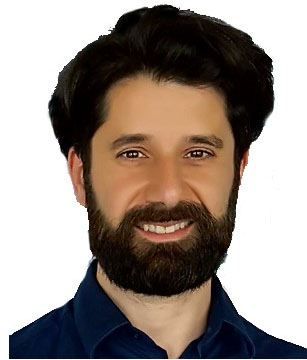Invited Speaker

Dr. Camillo Porcaro
Professor, Department of Neuroscience and Padova Neuroscience Center (PNC), University of Padova, ItalySpeech Title: Dynamics of the ‘cognitive’ P3b brain wave at rest for AD prediction in MCI
Abstract: Alzheimer’s disease (AD) is the most common cause of dementia that involves a progressive and irrevocable decline in cognitive abilities and social behaviour, thus annihilating the patient’s autonomy. Among the neurophysiological markers of attention and cognition, one of the sub-components of the ‘cognitive brain wave’ P300 recordable in an odd-ball paradigm –namely, the P3b is extensively regarded as a sensitive indicator of cognitive performance. Several studies have reliably shown that changes in the amplitude and latency of the P3b are strongly related to cognitive decline and ageing, both healthy and pathological. Here, we used a P3b spatial filter to enhance the electroencephalographic (EEG) characteristics underlying 175 subjects divided into 135 mild cognitive impairment (MCI) subjects, 20 elderly controls (EC), and 20 young volunteers (Y). The Y group served to extract the P3b spatial filter from EEG data, which was later applied to the other groups during resting conditions with eyes open and without being asked to perform any task. The group of 135 MCI subjects could be divided into two subgroups at the end of a month follow-up: 75 with stable MCI (MCI-S, not converted to AD) and 60 converted to AD (MCI-C). The P3b spatial filter was built using a signal processing method called Functional Source Separation (FSS), which increases the signal-to-noise ratio by using a weighted sum of all EEG recording channels rather than relying on a single or a small subset of channels. A clear difference was observed for the P3b dynamics at rest between groups. Moreover, a machine learning approach showed that P3b at rest could correctly distinguish MCI from EC (80.6% accuracy) and MCI-S from MCI-C (74.1% accuracy), with an accuracy as high as 93.8% in discriminating between MCI-C and EC. Finally, a comparison of the Bayes factor revealed that the group differences among MCI-S and MCI-C were 138 times more likely to be detected using the P3b dynamics compared with the best-performing single electrode (Pz) approach. In conclusion, we propose that P3b, as measured through spatial filters, can be safely regarded as a simple and sensitive marker to predict the conversion from an MCI to AD status, eventually combined with other non-neurophysiological biomarkers for a more precise definition of dementia having neuropathological Alzheimer characteristics.
Keywords: P300, P3a/P3b, Aging, Alzheimer’s disease (AD), Mild Cognitive Impairment (MCI), Blind Source Separation (BSS), Functional Source Separation (FSS), Electroencephalography (EEG), Support vector machine (SVM)
Biography: Prof. Porcaro is a computational neuroscientist with an interest in the development of novel analysis methods to extract information from non-invasive measures of brain activity. After a Ph.D. in Neuroimaging, at the University of Chieti (Italy) in 2008, he moved to the University of Birmingham for a post-doc on multimodal brain imaging. In 2011, he joined the Institute of Neuroscience, Newcastle University, after being awarded a highly competitive independent research position. In 2012, Prof. Porcaro moved back to Italy, where he has held an Independent Research Position at the Institute of Cognitive Sciences and Technologies (ISTC) – National Research Council (CNR), Rome, Italy. In 2014 and 2015, he was invited as Visiting Professor at the Neural Control of Movement Lab, Department of Health Sciences and Technologies ETH, Zurich, Switzerland. From 2016 to 2020, he has also been Visiting Professor at the Department of Human Kinesiology, Movement Control & Neuroplasticity Research Group, KU Leuven, Belgium. Since 2015, Prof. Porcaro is Adjunct Professor at Department of Information Engineering – Università Politecnica delle Marche, Ancona. From 2021, he becomes an Associate Professor at the Department of Neuroscience & Padova Neuroscience Center (PNC), University of Padova, Padova, Italy. Prof. Porcaro has published around 100 full papers in international scientific journals.
